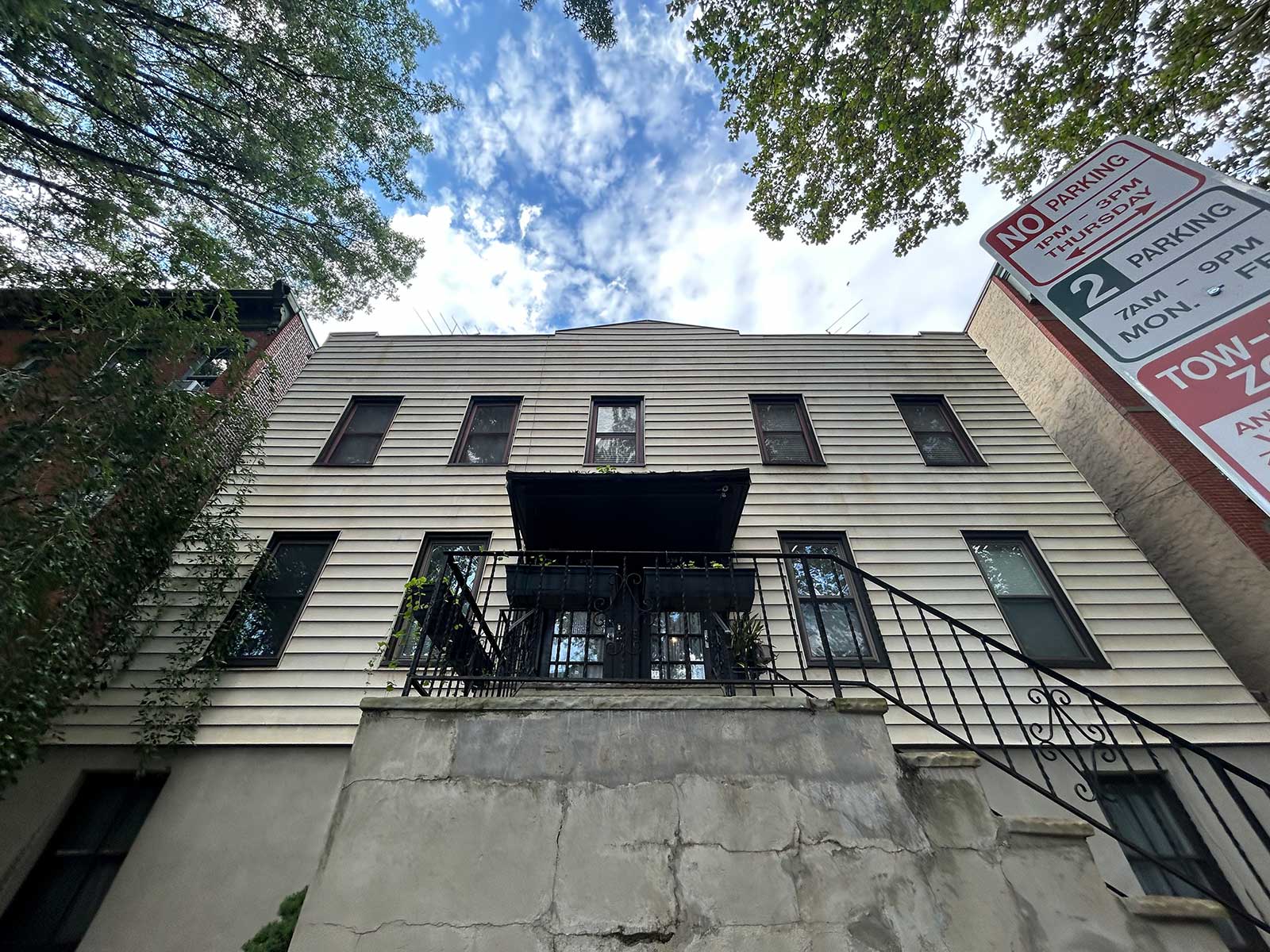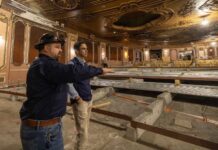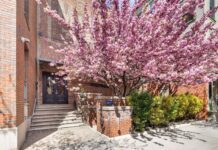
A Hamilton Park resident’s discovery of a ca. 1860 photo has altered the course of hearings before the city’s preservation commission over restoring a pre-Civil War home in downtown Jersey City.
“When you look at the home, it’s quite unassuming,” said Mattias Johansson, who located the photo in the Rutgers University library collection.
The black-and-white photo of Judge Stephen Garretson’s former home at 240 Seventh Street, believed to be the oldest building in Hamilton Park, was part of a memorial pamphlet made by Garretson’s congregation — the Third Reformed Dutch Church — in the 1890s. Garretson helped finance the construction of the church, and it is believed that the congregation finished paying back the loan around the time the pamphlet was printed in his honor.

The photo in question shows five people, presumably members of the Garretson household, dressed in Victorian attire standing on a grassy hill. A gravel driveway leads to a white, shuttered homestead with a wooden porch that once looked out on Garretson’s dairy farm.
“It tells us that the home was built when this part of Jersey City was almost exclusively rural farmland and woodlands,” Johansson said.
It’s hard to believe that this is the same building that still stands on Seventh Street. The home’s bucolic charm seems lost without the surrounding farm. The clapboard and shutters have been removed. The roofline was modernized to blend into the rowhouses and brownstones built later on.
The historic photo also reveals that what is the home’s street level today was once half-buried underground, allowing a wooden porch to frame the entrance. The building’s current two-story staircase, which seems ill-suited to a 19th-century farmhouse, is due to the street grading in the mid-1800s that stranded the entryway on the second floor. The only shortcoming of the photo is that it shows the Garretson House from a side angle.
“We haven’t found a photo of the house from the front,” Johansson told Jersey Digs. “But a lot can be gleaned from that photo.”
Before Johansson presented his findings to the Historic Preservation Commission in April, architect Anthony Vandermark, based his renovation on the oldest photo he was able to unearth — a 1938 tax photo. He also presented a plan to remove the existing two-story rear addition and replace it with a four-story addition, adding six more units. It is not clear how the 1860 photo will affect the final product, but the architect promised a “tedious restoration of the facade.”
“What the intent is here this evening is to restore to the time of significance when this building was prominent,” Vandermark said to the commission in April.
Other neighborhood residents joined Johansson in hoping the architect would go back to the drafting table and draw up a more period-appropriate restoration.
“If this is truly one of the oldest houses in this neighborhood I would want to preserve it,” said Diane Atwell, vice president of the Hamilton Park Neighborhood Association. “Or at the very least, do more digging to find out what the significance of it could be.”
Janel Mittelstedt, reference librarian at Rutgers University, has been helping Johansson research the home. So far, she has learned that after Garretson died in 1862, his widow and son continued to live in the home until about the 1890s. At that time, the neighborhood’s rapid growth was a result of the family’s decision to subdivide the property.
“They finally moved away and the house must have been encased by the other homes around it by 1895,” Mittelstedt said. “What was an unassuming house turned out to be the key to this interesting view into the history of Jersey City.”
Mittelstedt knows the street grading took place in 1850 because a newspaper article from that year published in the Jersey City Telegraph reports that the city’s street grader encountered the remains of an indigenous person. The story roused her concern because it reports “a great number of skeletons in that vicinity.” Mittelstedt hopes that the property can be properly excavated during the construction process.
“I hope the city, if not the developer, will make the effort to contact whatever remnant of the tribe remains,” Mittelstedt said. “So that whatever bones they find can be repatriated and buried with respect.”
The next meeting of Jersey City’s historic preservation commission is on Monday, Oct. 23. Members of the public can attend the virtual meeting here.


